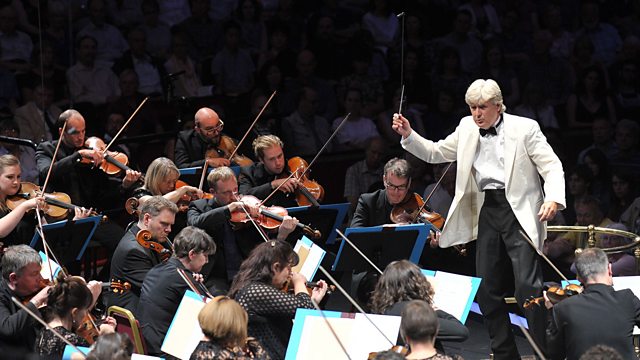
Second Symphony by Jean Sibelius
Celebrating the 150th anniversary of Finland’s greatest composer with his most popular symphony conducted by a leading Scandinavian conductor of today.
Sibelius: Symphony No. 2 in D major
����ý Scottish Symphony Orchestra
Thomas Dausgaard (conductor)
Celebrating the 150th anniversary of Finland’s greatest composer with his most popular symphony conducted by a leading Scandinavian conductor of today.
����ý’s Samira Ahmed is joined by Pauliina Stahlberg, director of the Finnish Institute in London.
Jean Sibelius (1865–1957)
Symphony No. 2 in D, Op. 43 (1902)
A 19th century Finnish romantic who lived into the jet age, Sibelius is credited with helping to build the very concept of Finnish national identity through his music.
The Second Symphony was conceived in the turbulent years at the turn of the 19th and 20th centuries when Finnish national identity was being forged. It is not clear that the composer had an expressly nationalistic agenda here: the work was partly conceived during a stay in Italy and the episodic second movement is thought to have originated in sketches intended for a composition inspired by the Don Juan story.
PIcture credit: Chris Christodoulou
Last on
More about the music
Sibelius: Symphony No. 2 in D major
����ý Scottish Symphony Orchestra
Thomas Dausgaard (conductor)
Celebrating the 150th anniversary of Finland’s greatest composer with his most popular symphony conducted by a leading Scandinavian conductor of today.
����ý’s Samira Ahmed is joined by Pauliina Stahlberg, director of the Finnish Institute in London.
Jean Sibelius (1865–1957)
Symphony No. 2 in D, Op. 43 (1902)
It’s not often a classical composer finds himself a national hero, but that’s exactly what happened to Jean Sibelius, the man we are celebrating in this ����ý World Service broadcast from the 2015 ����ý Proms. Sibelius is a landmark presence at this year’s Proms: to mark the 150th anniversary of his birth, all seven of his symphonies and many other works are being featured.
A 19th century Finnish romantic who lived into the jet age, Sibelius is credited with helping to build the very concept of Finnish national identity through his music. Not just in the orchestral tone poem Finlandia, often thought of as the second, unofficial national anthem of the country, but also through other works such as the choral symphony Kullervo, The Swan of Tuonela or the Karelia Suite.
The Second Symphony was conceived in the turbulent years at the turn of the 19th and 20th centuries when Finnish national identity was being forged. It is not clear that the composer had an expressly nationalistic agenda here: the work was partly conceived during a stay in Italy and the episodic second movement is thought to have originated in sketches intended for a composition inspired by the Don Juan story. Later, Sibelius would only say that the music is "a struggle between death and salvation".
The Symphony may have been inspired by a story of a universal, troubled individual, but Sibelius’s compatriots heard in it a clear description of the very specific Finnish national struggle against Russian oppression. The Russian-owned Duchy of Finland enjoyed a degree of autonomy throughout most of the 19th century but then experienced a sudden wave of 'russification' initiated by the Tsar in the 1890s.
In that atmosphere, many works of art suddenly acquired a political dimension. Even something as innocuous as the gloriously upbeat version of the Symphony’s opening theme which re-appears near the end of the final movement: Sibelius said it was simply a musical impression of a villa in the depth of Finnish forests. What many in the audience heard was a fervent hope that Russian tyranny will be soon overthrown.
Broadcasts
- Sat 5 Sep 2015 18:06GMT����ý World Service
- Sun 6 Sep 2015 11:06GMT����ý World Service
